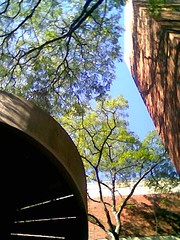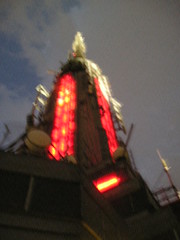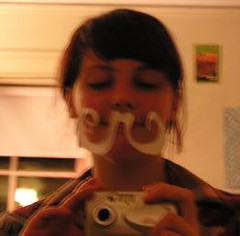COME ONE! COME ALL!
from artinteractive.org:

David Merrill's "Face the Music"
Collision 8: "El Ocho"
Curated By: jackbackrack, Dan Paluska, Brian Knep
September 16 through October 03, 2005.
Collision 8: "El Ocho" is the wildest and most experimental collision show to date! Halfway between an art exhibition and a mad science fair, Collision 8 artists invent new technologies, new art forms, and even new forms of life (like robot bugs). The future of interactivity starts here.
Collisions showcase of envelope-pushing artwork in an interactive workshop/laboratory format. The artwork often involves never before tried technologies, concepts and installation approaches. It is an opportunity for Collision colluders to experiment and show new ideas and techniques and to discuss their work with and gather feedback from the public.
The Collision Collective is a group of artists and researchers from MIT and the Boston area whose work explores the frontiers of art, technology and human behavior.
from lucy:
This promises to be as great show, and it's closing this weekend. I'd like to take a little vacation on Saturday afternoon to check it out before it's consigned to the archive. (Is that the digital art equivalent of puppy heaven?) The gallery is open from 12p-6p on Saturday, so I'd like to leave Providence early-ish in the afternoon. Perhaps, after the exhibit, there could be some Central Square carousing? I'll send out a more comprehensive email tomorrow or the next day--tell me if you have any travel time preferences/want to go/wish I would stop bullying you and just play my goldurned accordion.

David Merrill's "Face the Music"
Collision 8: "El Ocho"
Curated By: jackbackrack, Dan Paluska, Brian Knep
September 16 through October 03, 2005.
Collision 8: "El Ocho" is the wildest and most experimental collision show to date! Halfway between an art exhibition and a mad science fair, Collision 8 artists invent new technologies, new art forms, and even new forms of life (like robot bugs). The future of interactivity starts here.
Collisions showcase of envelope-pushing artwork in an interactive workshop/laboratory format. The artwork often involves never before tried technologies, concepts and installation approaches. It is an opportunity for Collision colluders to experiment and show new ideas and techniques and to discuss their work with and gather feedback from the public.
The Collision Collective is a group of artists and researchers from MIT and the Boston area whose work explores the frontiers of art, technology and human behavior.
from lucy:
This promises to be as great show, and it's closing this weekend. I'd like to take a little vacation on Saturday afternoon to check it out before it's consigned to the archive. (Is that the digital art equivalent of puppy heaven?) The gallery is open from 12p-6p on Saturday, so I'd like to leave Providence early-ish in the afternoon. Perhaps, after the exhibit, there could be some Central Square carousing? I'll send out a more comprehensive email tomorrow or the next day--tell me if you have any travel time preferences/want to go/wish I would stop bullying you and just play my goldurned accordion.




